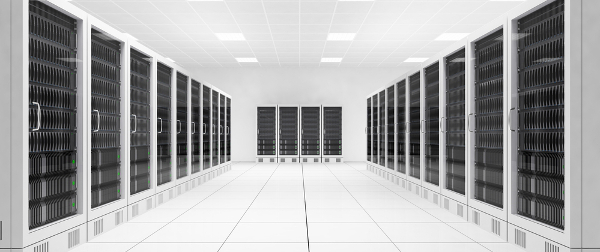
It has been reported that, due to higher energy prices, UK-based data centres are looking less appealing to businesses. We spoke to Eaton’s vice president for power in EMEA, Cyrille Brisson, about the possibilities of more free cooling data centres in the UK and how going green can cut costs.
Can you give us a bit of background about your role at Eaton and the company itself?
Eaton is an energy management company dealing with energy in all its shape and form, so we have a division that’s working with aerospace, car manufacturers and machinery. We also have an electrical part which deals with all kinds of devices that go into data centres to help manage electricity better.
I’m the head of the power quality business and we supply a lot of infrastructure in the data centres. I specialise in UPS’s and racks and distribution within the racks, but we supply all the electrical infrastructure. Our physical infrastructure enables all the IT equipment to run smoothly.
How are rising energy prices affecting UK data centres?
It’s prices and it’s also possible shortages. The safety level in the UK grid has already narrowed quite a bit and with the scheduled closure of old power plants and the time it will take to get new capacity on stream, the margin for error will become extremely small; it is calculated that by around 2015 the reserve capacity of the grid will be only 2% which is nothing. So for example there is an extended maintenance beyond schedule for a power plant, you could find cases where there could be some shortages. In this case, the business contract to supply power is different to the consumer contract. The consumer contract compels the utility to always supply. The business contract contains a clause that will enable the grid to cut the power, and this is obviously a huge problem for businesses relying on continuity. So it’s not only about the price, but also the stability of the supply. It might not be much of a problem from a technical standpoint, for large data centres, but from small and mid-sized businesses that still have their IT on premise, this could be a big headache, if they start seeing some risk of shutting down the infrastructure.
The other aspect of it is that when you start seeing some very low capacity peak, you start seeing a wide fluctuation in the price of electricity. If you see the way the market is evolving, at peak time you could have cases when the price is completely squeezed.
Do you think that more companies would be tempted to go abroad and use overseas data centres?
There are two groups of countries that are doing much better. One is the Nordics because they have a huge supply of hydro power which is clean, zero emissions, that is clearly a big advantage for them. They also have free cooling. The other country is France because it still relies for 75% of its power on nuclear power, so it gives it a very long term perspective on the cost of power.
To save costs, do you think that data centres will be focusing on being more ‘green’?
We’ve certainly seen a big rise in the development of data centres in northern Europe which has become a primary location. When you take a look at the availability of free cooling, so when you’re going to be within the range in terms of temperature and humidity to be able to run on ‘free cooling’, you are going to find that Ireland or the north of the UK have no problem with this, the problem you’re going to find is not the cost of power itself. In terms of free cooling you don’t need to go very much further north than where you are in the UK, it’s relatively acceptable. One of the problems you have if you are close to a pollution centre is that to avoid having a lot of fine particles accumulating on the server and potentially creating some short circuits or these kind of issues, you have to run filters, and whenever you have to push the air through filters it takes a toll in terms of energy. I would say that the UK is not such a bad place for that, it’s more a question of the cost of power.
So you think that you could have free cooling data centres in the north of the UK?
Even in the south of the UK. A lot of data centres today are running on free cooling because ASHRAE, the association for air conditioning engineers, has extended the temperature and humidity envelope in which the centre can run. HP, Dell and other manufacturers have come up with new generational servers that can run above 25 degrees and can take a few hours at 40 degrees and more. So you find yourself with IT equipment that has progressed tremendously in this capacity to handle high temperatures, which means that the inlet temperature can already be set above 20 degrees.






